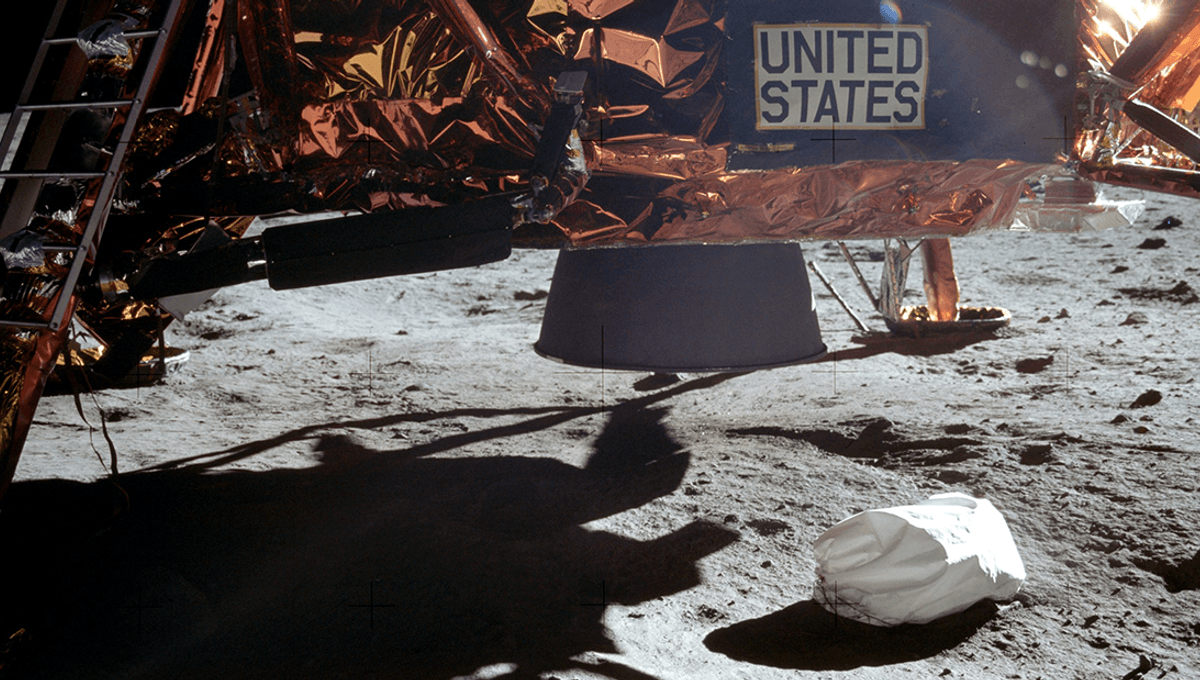
On the Moon, as well as several robots, some tardigrades, a family photograph, and maybe even some dinosaur remains, you will find 96 bags of human poop.
On the way up to the Moon, Apollo astronauts collected their urine in tanks, while anyone who needed to poop had to strap a bag over their anus to do so. These bags, along with other waste and trash, were taken to the Moon with the astronauts, who deposited them on the lunar surface to free up weight space for samples of the Moon. In fact, the first ever photograph taken on the Moon by Armstrong featured one of these bags of trash.
While it’s unusual to be excited about somebody else’s poop, it’s less weird when it comes from astrobiologists. The bags are of interest as they, at least at first, contained microbial life and viruses. Retrieving them and analyzing their contents could tell us whether life could endure these conditions (though don’t get your hopes up) or whether we could potentially end up contaminating other bodies in the solar system as we explore.
Earth’s atmosphere protects us from the harmful effects of UV radiation and keeps the temperatures on Earth habitable. The Moon does not get this protection, and models have predicted that spores will likely become sterilized within one lunation (lunar month).
However, we are always being surprised by life’s ability to, uh, find a way, so we can’t rule out the possibility entirely. In 2020, Japanese researchers found that dried bacteria were able to survive for three years on the exterior of the International Space Station (ISS), while in 2017 Russian cosmonauts also found bacteria living on the outside of the ISS. They survived temperatures – ranging from 121°C (250°F) to -157°C (-250°F) – similar to those on the Moon. Given bacteria’s remarkable ability to be revived (sometimes millions of years later) it’s at least worth glancing at Neil Armstrong and Buzz Aldrin’s poop.
So who owns the poop, and who is protecting it now? Well, the US has given the Apollo 11 landing site and the artifacts left there heritage status. Under the Outer Space Treaty of 1967, which the US signed up to, they legally own the artifacts (though the site itself, and the Moon and other celestial bodies, are considered the common heritage of humanity). One problem is that nobody is really responsible for their own space junk, something scientists are hoping we will soon correct.
In short, there is a surprising amount of poop on the Moon, and it’s valuable enough for scientists to want to claim it. Neil Armstrong’s poop, while claimed by the US among other Apollo 11 artifacts, is not very well protected by providing it heritage status, while other bags of poop are much more up for grabs. Just don’t go whining to NASA when you don’t like the contents.
Source Link: Who Exactly Owns Neil Armstrong's Moon Poop? And Why Is It So Important We Get It Back?